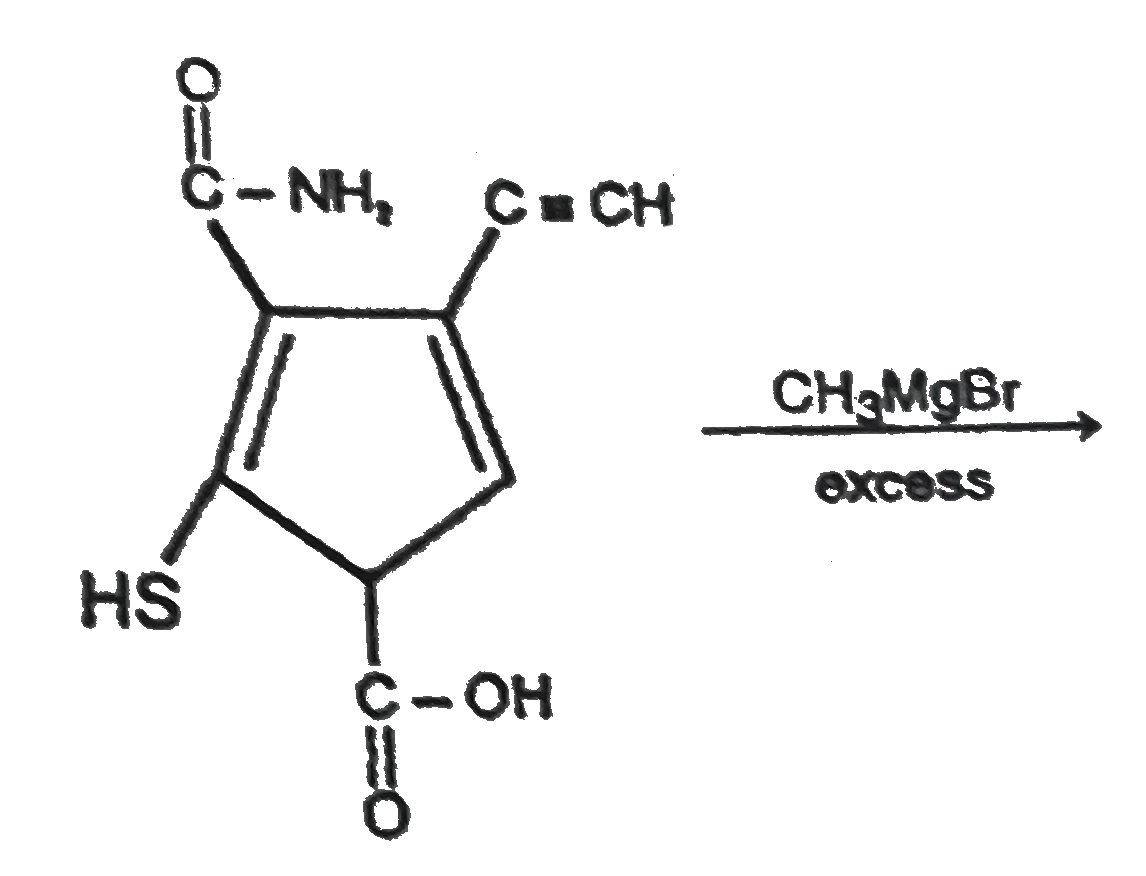For reaction A+2B→C. The amount of C formed by starting the reaction with 5 mole of A and 8 mole of B is :
5 moles
8 moles
16 moles
4 moles
The correct Answer is:D
A+2B→C
1 mole of A reacts with 10 moles of B
∴ 5 moles of A will react with 10 moles of B
But we have only 8 moles of B, ∴ B is the limiting reagent
2 moles of B will form 1 mole of C
∴ 8 moles of B will form C = 4 moles
Topper's Solved these Questions
- SOME BASIC CONCEPTS OF CHEMISTRYBOOK - DINESH PUBLICATIONCHAPTER - SOME BASIC CONCEPTS OF CHEMISTRYEXERCISE - SELECTED STRIGHT OBJECTIVE TYPE MCQs
42 Videos
- SOME BASIC CONCEPTS OF CHEMISTRYBOOK - DINESH PUBLICATIONCHAPTER - SOME BASIC CONCEPTS OF CHEMISTRYEXERCISE - LINKED COMPREHENSION TYPE MCQs
12 Videos
- SOME BASIC CONCEPTS OF CHEMISTRYBOOK - DINESH PUBLICATIONCHAPTER - SOME BASIC CONCEPTS OF CHEMISTRYEXERCISE - ULTIMATE PREPARATORY PACKAGE
20 Videos
- SOLUTIONS BOOK - DINESH PUBLICATIONCHAPTER - SOLUTIONS EXERCISE - ULTIMATE PREPARATORY PACKAGE
10 Videos
- SURFACE CHEMISTRY BOOK - DINESH PUBLICATIONCHAPTER - SURFACE CHEMISTRY EXERCISE - BRAIN STORMING MULTIPLE CHOICE QUESTIONS (MCQs)
8 Videos
Similar Questions
Knowledge Check
For a reaction A+3B→C+D the amount of C formed by starting the reaction with 5 moles of A and 9 moles of B is ____________.
A2 molesB3 molesC4 molesD5 molesFor reaction A+2B→C. The amount of C formed by starting the reaction with 5 mole of A and 8 mole of B is :
A5 molesB8 molesC16 molesD4 molesFor the reaction A+2B→C, 5 moles of A and 8 moles of B will produce
A5 moles of CB4 moles of CC8 moles of CD13 moles of C
For the reaction A+2B→C,5moles of A and 8moles of B will produce :-
View SolutionFor the reaction, X+2Y→Z
5 moles of X and 9 moles of Y will produce:
View SolutionFor the reaction A+B⇔C+D taking place in a 1 L vessel, equilibrium concentration of [C]=[D]=0.5M if we start with 1 mole each A and B. Percentage of A converted into C if we start with 2 moles of A and 1 mole of B, is
View SolutionFor the reaction A+B⇔C+D taking place in a 1 L vessel, equilibrium concentration of [C]=[D]=0.5M if we start with 1 mole each A and B. Percentage of A converted into C if we start with 2 moles of A and 1 mole of B, is
View SolutionThe reaction A →B follows first order reaction. The time taken for 0.8 mole of A to produce 0.6 mole of B is 1 hour. What is the time taken for conversion of 0.9 mole of A to produce 0.675 moles of B?
View Solution

